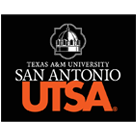Document Types
Individual Presentation
Start Date
2-24-2024 2:20 PM
End Date
2-24-2024 2:40 PM
Track
Culture and Pedagogy
Abstract
Title: The Open Pedagogy Cycle: Open Educational Resources By and For Students
50 word abstract:
Open pedagogy is a continuous cycle that begins with students as creators of resources that can then serve various purposes in the Spanish classroom. In this presentation, I will show how OER created by SHL students can be adapted to be used by learners of Spanish at different levels.
Presentation description:
Open pedagogy (OP) is the practice of supporting students to be creators of open educational resources (OER) to exist beyond the classroom and serve a greater role in the community (Johnston & Stewart, 2020). Spanish as a heritage language (SHL) learners are ideal creators of OER since they have a wealth of linguistic and cultural knowledge and are motivated to give back to the community and share their work. Creating OER empowers SHL students and validates their bilingualism. In the past year, students in SHL classes at a university in Texas produced four OER projects: a news article, a folk story, a persuasive poster, and a movie review. These linguistically and culturally rich materials can be shared with instructors to use in their classes.
As a student who participated in the OER creation process, I was inspired to create lesson plans to accompany the students’ projects and share the lesson plans as another OER, which continues the cycle of OP. In this presentation, I will share these materials and explain how instructors can adapt and use them for a variety of purposes to help learners at various levels. For example, they can be used as supplementary work to focus on a particular area of grammar, a base for students to begin their own projects, exposure to new vocabulary, to promote literacy in Spanish, among others.
The goal of this presentation is to encourage SHL instructors to practice OP in their classrooms by demonstrating the seemingly endless benefits of OER creation for both student creators and users of the materials. Creating OER improves students’ linguistic development and self-confidence, and learners who benefit from those materials can be inspired by similar students using their Spanish in the real world to help others and their communities.
Learning objectives:
-
Participants will learn how OER can be modified and used in Spanish instruction at various levels.
-
Participants will learn about the benefits students receive as creators and consumers of OER.
References:
Johnston, S., & Stewart, B. (2020). The open page: A case study of partnership as open pedagogy. International Journal for Students as Partners, 4(2), 81-89.
Recommended Citation
Pevia, Marco Adrián, "The Open Pedagogy Cycle: Open Educational Resources By and For Students" (2024). 11th National Symposium on Spanish as a Heritage Language. 23.
https://digitalcommons.tamusa.edu/heritage_spanish/SCHEDULE/Saturday/23
Included in
Latin American Languages and Societies Commons, Spanish and Portuguese Language and Literature Commons
The Open Pedagogy Cycle: Open Educational Resources By and For Students
Title: The Open Pedagogy Cycle: Open Educational Resources By and For Students
50 word abstract:
Open pedagogy is a continuous cycle that begins with students as creators of resources that can then serve various purposes in the Spanish classroom. In this presentation, I will show how OER created by SHL students can be adapted to be used by learners of Spanish at different levels.
Presentation description:
Open pedagogy (OP) is the practice of supporting students to be creators of open educational resources (OER) to exist beyond the classroom and serve a greater role in the community (Johnston & Stewart, 2020). Spanish as a heritage language (SHL) learners are ideal creators of OER since they have a wealth of linguistic and cultural knowledge and are motivated to give back to the community and share their work. Creating OER empowers SHL students and validates their bilingualism. In the past year, students in SHL classes at a university in Texas produced four OER projects: a news article, a folk story, a persuasive poster, and a movie review. These linguistically and culturally rich materials can be shared with instructors to use in their classes.
As a student who participated in the OER creation process, I was inspired to create lesson plans to accompany the students’ projects and share the lesson plans as another OER, which continues the cycle of OP. In this presentation, I will share these materials and explain how instructors can adapt and use them for a variety of purposes to help learners at various levels. For example, they can be used as supplementary work to focus on a particular area of grammar, a base for students to begin their own projects, exposure to new vocabulary, to promote literacy in Spanish, among others.
The goal of this presentation is to encourage SHL instructors to practice OP in their classrooms by demonstrating the seemingly endless benefits of OER creation for both student creators and users of the materials. Creating OER improves students’ linguistic development and self-confidence, and learners who benefit from those materials can be inspired by similar students using their Spanish in the real world to help others and their communities.
Learning objectives:
-
Participants will learn how OER can be modified and used in Spanish instruction at various levels.
-
Participants will learn about the benefits students receive as creators and consumers of OER.
References:
Johnston, S., & Stewart, B. (2020). The open page: A case study of partnership as open pedagogy. International Journal for Students as Partners, 4(2), 81-89.

